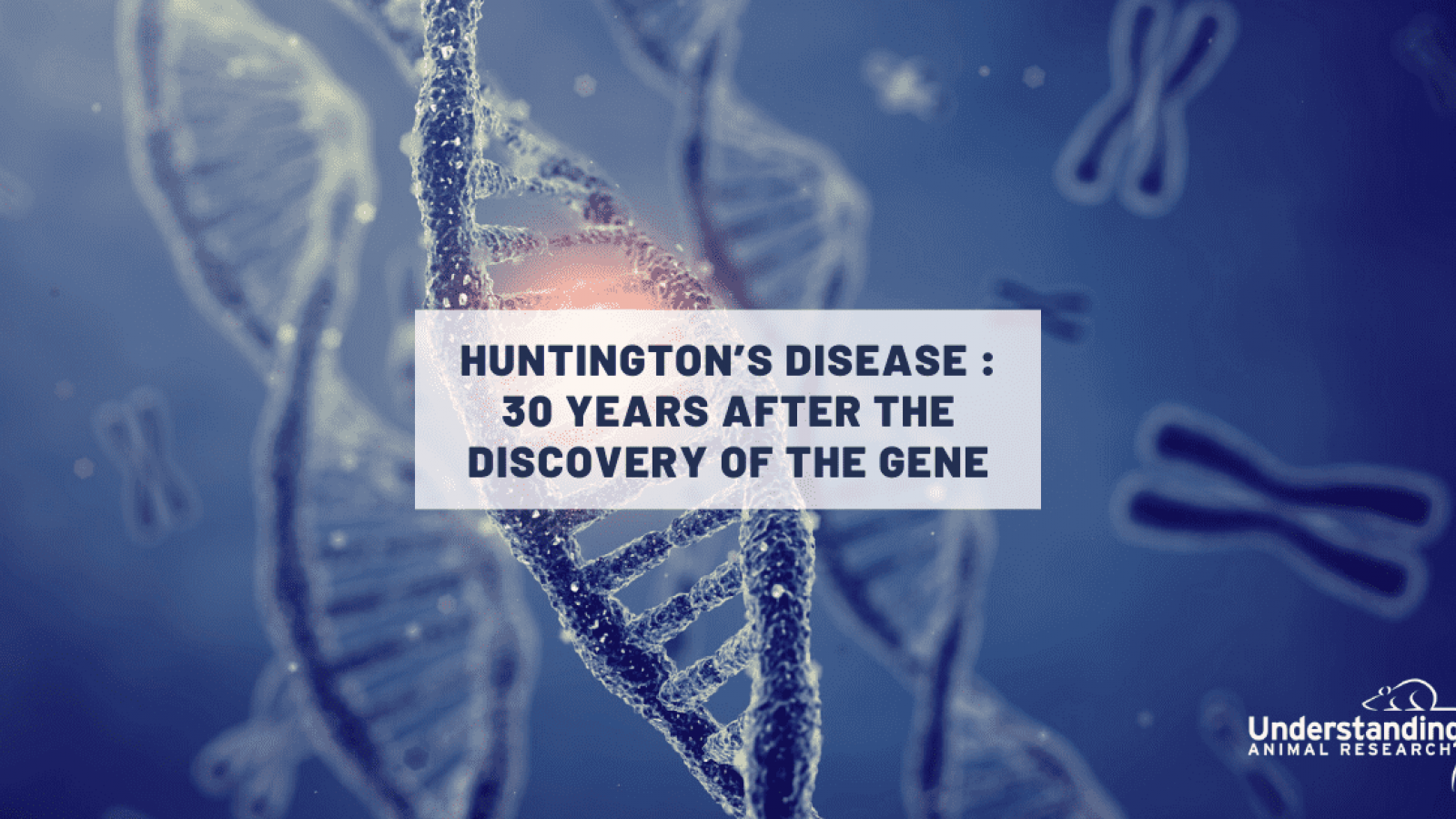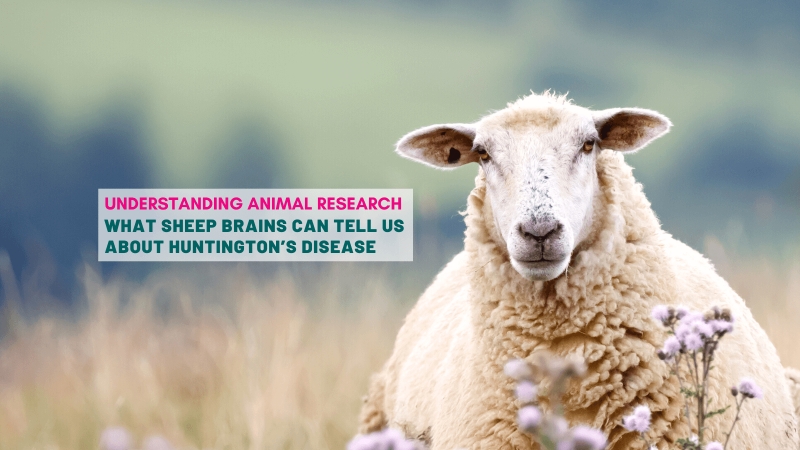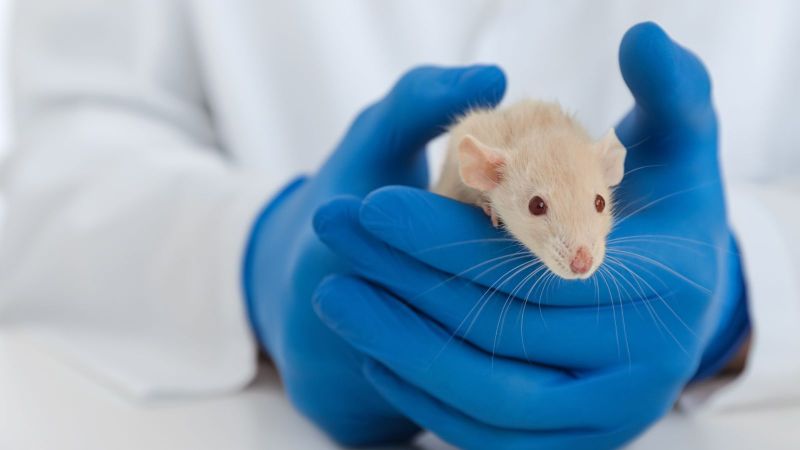
Huntington's disease is a condition that stops parts of the brain from working properly over time. It is a genetic condition inherited from a parent who carries the gene. The symptoms, such as movement disorder and dementia, usually start to appear at 30 to 50 years of age, but can begin earlier or later. The symptoms worsen over time and are usually fatal after a period of about 20 years.
There is currently no cure for the disease but there are treatments to help with the symptoms.
Finding the gene
Almost 30 years ago, in 1983, scientists discovered the gene that causes Huntington’s disease. Huntington's was the first disease-associated gene to be molecularly mapped to a human chromosome. Ten years later, in 1993, scientists identified the DNA sequence and determined the precise nature of the Huntington’s disease-associated mutation.
The Huntington’s gene contains a region where the DNA sequence ‘CAG’ is repeated. People with over 40 or more repeats tend to manifest the disease. This discovery seemed to promise major advances in the treatment or prevention of the condition. But has that promise been realised?
Without a doubt, the identification of the gene led to crucial diagnostic improvements. Today this genetic identification is routine – and completely automated. With a simple blood test, it is possible to measure the number of CAG repeats and establish with something close to certainty the likelihood of a patient developing the deadly neurodegenerative disease or passing it on to their children. Although the blood test is automated, the consequences are all too human, so patients are usually provided with genetic counselling to discuss the test results.
Unfortunately, a cure for Huntington’s disease does not currently exist. There's nothing that seriously slows the progression of the disease. The knowledge of the disease at the molecular genetic level has not yet resulted in effective medical interventions.
Understanding the neurodegenerative disease
Genetic studies, mostly in mice, suggest that the mutation causing Huntington’s disease causes a gain of function – not a loss of function as in many other genetic diseases.
Researchers removed, cropped or added partial or full sections of the mutated gene in mice and observed the consequences. The mouse models were an essential part of the work that led to the discovery that the Huntington mutation creates a new protein that is poisonous to the cells. This discovery opens up possibilities for different therapeutic options.
From cells to organisms
In a disease of the brain, potential treatments are unlikely to work just at a cellular level. Therapies will affect the neurological, behavioural and cognitive features of the disease. It isn’t about one neuron, but a network of neurons surrounded by different support cells, all of which work together in the brain. So it is important to understand the impact of drugs on the whole organism.
But cell studies are a starting point. David Rubinsztein, Professor of Neuroscience at the University of Cambridge explains:
“We only go on to do mouse studies where we've got positive data in cells and zebrafish. The probability of success in mice is often enhanced by prior data. This also reduces the number of mice that are needed for significant results.
“Studies in mice are paramount to the discovery of therapeutic solutions. Experiments on cells, or even organoids, aren’t going to bypass work in mice. Organoids are still quite artificial with only a few cells represented. There are many aspects of the disease that you're not going to capture, especially for a disease of the brain. You want to make sure a drug doesn’t affect the complexity of behaviours so you can't limit the studies in tissue cultures. Mice models are absolutely critical for understanding the biology of the disease and testing therapies. And the mouse models for Huntington’s disease are very good.”
There is a wide repertoire of robust mouse models that express either the full gene or just the toxic bit of the gene. Prof Rubinsztein continues:
“Because Huntington’s disease is a simple genetic disease, the mouse models are much more faithful than the mouse models for Alzheimer's disease or other complex diseases where both genetic and environmental factors contribute. And because we have these good, consistent phenotypes, we need even fewer animals in our studies.”
However, even these mice models are not perfect. Mice are not humans and there are several aspects that need to be accounted for. Maybe one of the most important when testing drugs is the ability of mice to metabolise drugs. The half-lives of drugs are sometimes 50– 40 minutes in mice, while they can be 8– 10 hours in humans.
“It can be challenging to translate that difference across species. But otherwise for Huntington’s disease mice are pretty good and faithful models of what happens in humans,” Prof Rubinsztein told UAR.
From fundamental knowledge to potential cures
Studies in mice have helped pinpoint several potential ways of slowing down Huntington’s disease. Because the disease is primarily caused by a toxin, an obvious strategy would be to try and lower the level of this molecule. That can be attempted through a range of approaches, one of them is to reduce the formation of the toxin.
So far gene therapy approaches that do that have been successful in mice but not in humans. Prof Rubinsztein explains:
“Not because the mice are bad models of the disease but most probably because humans have a much bigger brain and it can be more difficult to get the drug into all the parts of the brain that matter.”
The same goal could be obtained by harnessing the power of a process called autophagy – the natural system of cell maintenance. Researchers are trying to enhance the removal of the mutant protein by stimulating the cell to move the protein into digestive vesicles in the cells. There is now evidence from mice studies that show that driving this process can be beneficial.
Because Huntington’s disease is a neurodegenerative disease, there are lessons we learn that will most probably apply to more or less similar pathologies such as ALS, Parkinson's, Alzheimer's, and other dementias.
“For me, we need to intervene as early as possible and identify carriers of the disease before onset of symptoms. I think it's biologically easier to delay the onset rather than slow the progression, and it's ethically certainly superior. But of course further studies still need to inform on how to do that. There are still many options we are looking into that will hopefully translate to improved lives for patients,” concludes Prof Rubinsztein.
Last edited: 21 June 2023 15:37



